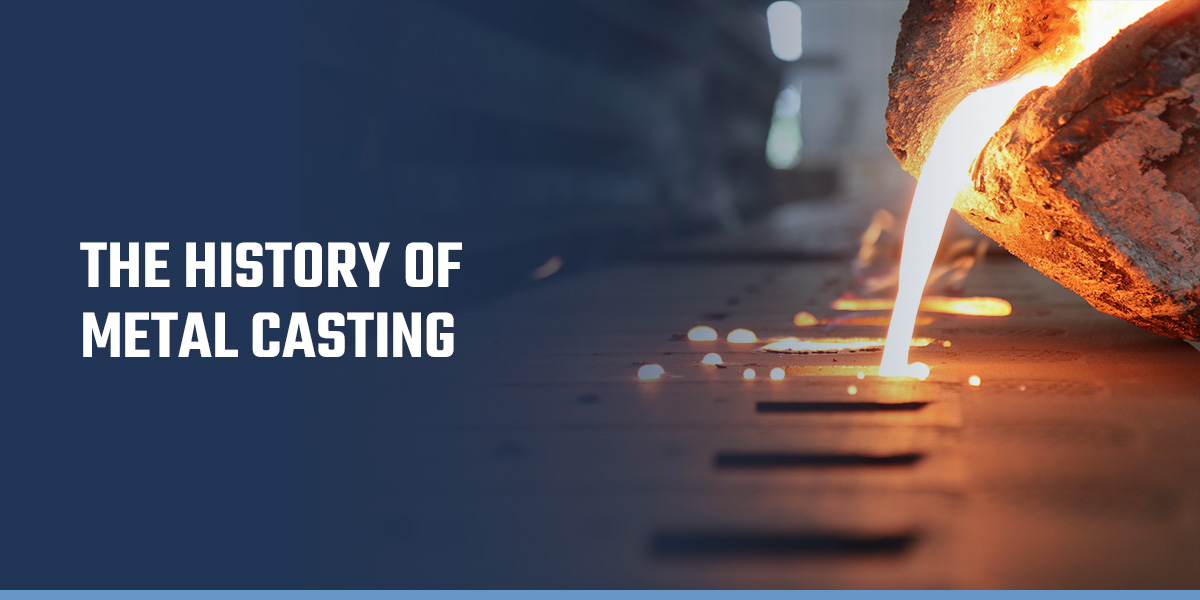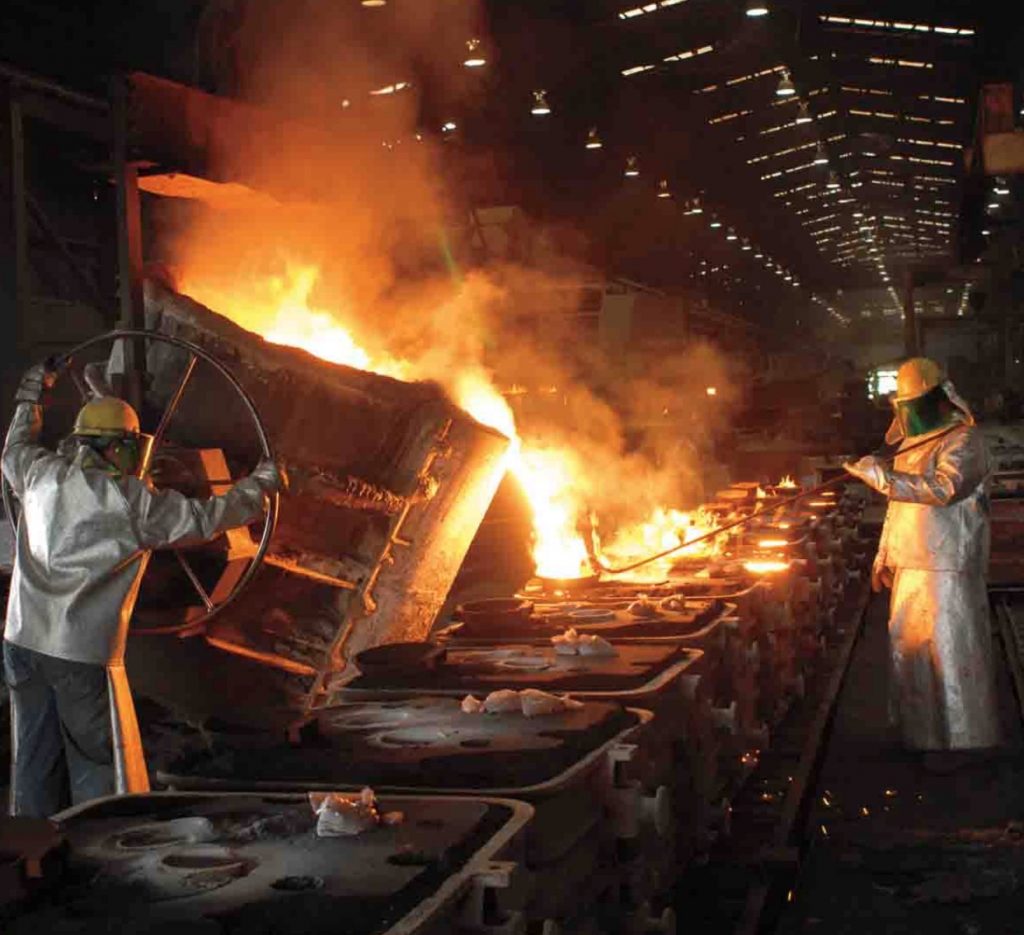Comprehending the Steel Castings Refine: A Comprehensive Overview for Beginners
The Metal Casting process is a fundamental technique in manufacturing that transforms molten metal right into solid forms. Beginners should grasp the numerous techniques involved, such as sand spreading and pass away casting. Understanding the materials, layout concepts, and safety and security procedures is similarly essential. Each element plays a vital function in attaining successful end results. As one navigates these complexities, the inquiry of exactly how to optimize each action for improved results comes to be increasingly important.
The Basics of Steel Casting
Although Metal Casting has advanced over centuries, its essential concepts stay regular and important to the production process. At its core, Metal Casting includes the makeover of liquified steel right into strong objects with numerous techniques. The procedure starts with the creation of a mold, which specifies the shape of the end product. Once the mold and mildew is prepared, metal is warmed to its melting point and poured into the cavity. After cooling, the metal solidifies, taking the form of the mold and mildew.
There are several casting techniques, consisting of sand spreading, financial investment casting, and pass away spreading, each with one-of-a-kind benefits and applications. The selection of method depends upon factors such as production volume, product kind, and wanted accuracy. As soon as cast, the final product may go through extra processes like machining or surface therapy to achieve the required surface and requirements. Comprehending these fundamentals is essential for anyone interested in the field of Metal Casting.

Understanding Materials Made Use Of in Metal Casting
Materials play an essential function in the Metal Casting process, affecting the end product's residential properties and performance. Numerous metals are made use of, including light weight aluminum, bronze, iron, and steel, each offering unique characteristics fit for particular applications. Aluminum is corrosion-resistant and light-weight, making it perfect for vehicle components. Iron, particularly cast iron, is favored for its excellent wear resistance and longevity. Steel offers high stamina and versatility, often made use of in heavy equipment components. Bronze, understood for its deterioration resistance and machinability, is frequently used in aquatic applications.
Along with the steels, numerous casting materials, such as sand, plaster, and ceramic, are utilized to develop mold and mildews. Sand casting, one of the most widespread approach, makes use of silica sand due to its thermal security and capacity to develop detailed forms. Plaster and ceramic mold and mildews use finer information however may need more complex processes. The option of materials straight affects the effectiveness, cost, and quality of the spreading operation.
The Design Refine: From Concept to Blueprint
The design procedure in Metal Casting starts with the preliminary idea advancement, where concepts are generated and assessed. This is complied with by the application of CAD modeling methods, allowing for accurate visualizations of the design. Ultimately, the blueprint completion actions assure that all requirements are properly recorded for production.
Initial Principle Growth
First idea advancement marks a vital phase in the Metal Casting process, where ideas transform right into tangible layouts. During this stage, designers collaborate with stakeholders and engineers to brainstorm and refine first ideas. They think about elements such as functionality, appearances, and manufacturability, making certain that the style meets the called for specifications and efficiency criteria. Sketches and harsh drafts are created to visualize the principles, permitting preliminary analyses of feasibility and cost-effectiveness. This phase also includes recognizing materials and possible casting approaches that line up with the design objectives. Ultimately, initial principle advancement lays the groundwork for a detailed plan, leading the subsequent phases of the spreading process and making sure an effective shift from principle to reality.
CAD Modeling Techniques
Changing concepts right into accurate layouts, CAD modeling methods play a pivotal function in the Metal Casting procedure. These strategies use innovative software to produce detailed three-dimensional models that accurately show the desired item. By employing tools such as parametric modeling, solid modeling, and surface modeling, designers can control measurements and forms easily. CAD systems additionally assist in simulation and analysis, enabling the recognition of possible imperfections prior to manufacturing starts. This proactive approach reduces material waste and enhances the style for manufacturability. In addition, CAD versions can be quickly modified, allowing quick iterations based on responses. Fundamentally, CAD modeling functions as the foundation of the layout procedure, connecting the void in between first ideas and the eventual production-ready designs.
Blueprint Completion Tips
Complying with the development of in-depth CAD designs, the following stage includes blueprint completion, which is essential in translating electronic layouts into actionable plans for production. This process begins with reviewing the CAD models for precision and conformity with specifications. As soon as validated, the dimensions, resistances, and product specifications are meticulously described to ensure clarity. Including notes and comments helps connect necessary information regarding spreading processes, surface area coatings, and assembly requirements. The completed blueprint goes through a rigorous authorization process, frequently including collaboration with designers and production groups to deal with any kind of prospective issues. Nevertheless modifications are made and approvals gotten, the plan is formally released, working as the fundamental record for the subsequent phases of Metal Casting, including pattern production and mold layout.
The Metal Casting Methods Explained

Metal Casting methods encompass a variety of techniques made use of to form molten steel into desired forms. These strategies differ according to the kind of material, complexity of the layout, and manufacturing volume. Home Page Sand casting is just one of one of the most common methods, entailing the production of a mold and mildew from sand to hold the liquified steel. Investment casting, or lost-wax spreading, permits intricate designs by utilizing a wax pattern that is melted away. Pass away casting uses high-pressure shot of molten metal right into a mold, ideal for automation. Other techniques include permanent mold and mildew spreading, which makes use of reusable mold and mildews, and centrifugal casting, where rotational forces aid in filling the mold and mildew. Each technique has its applications and advantages, making it essential for suppliers to choose the appropriate technique based on their particular demands and requirements. Recognizing these techniques is crucial for anybody associated with the Metal Casting procedure.
Finishing Procedures: Enhancing Your Casted Item

Completing procedures play a vital function in boosting the high quality and look of casted items. Various surface area therapy techniques, such as sprucing up and layer, are utilized to enhance durability and looks. In addition, top quality assessment techniques guarantee that the final product meets specified criteria and performance requirements.
Surface Treatment Techniques
A variety of surface area therapy methods play an important duty in enhancing the top quality and longevity of casted items. These techniques include approaches such as shot blasting, polishing, and coating. Shot blasting successfully removes surface area flaws, boosting the practical and visual attributes of the spreading. Polishing supplies a smooth finish, which is especially important for ornamental applications and elements needing marginal rubbing. Finishing methods, such as electroplating or powder coating, offer additional defense against rust and wear, ensuring toughness. Furthermore, surface therapies can boost bond for succeeding processes, such as painting or bonding. By utilizing these approaches, manufacturers can achieve top article exceptional surface high quality, which is essential for the efficiency and lifespan of Metal Casting in different applications.
Quality Assessment Methods
Efficient quality examination approaches are vital for ensuring the honesty and efficiency of casted items after the ending up procedures. Different methods are utilized to analyze the top quality of Metal Casting, including aesthetic inspection, dimensional checks, and non-destructive testing (NDT) Aesthetic inspection enables the identification of surface flaws, while dimensional checks assure that products meet specified tolerances. NDT approaches, such as ultrasonic screening and radiographic assessment, supply deeper insights right into inner stability without damaging the castings. Furthermore, mechanical testing, such as tensile and hardness tests, evaluates product residential or commercial properties - Wisconsin Aluminum Foundry. By employing a mix of these approaches, makers can improve product quality and integrity, eventually causing greater client fulfillment and decreased manufacturing expenses
Safety Considerations in Metal Casting
While the Metal Casting process supplies many benefits, it additionally provides a range of safety and security risks that must be carefully taken care of. Workers in casting centers are exposed to high temperature levels, molten steels, and dangerous products, which can cause severe injuries if proper preventative measures are not taken. Personal protective equipment (PPE) such as heat-resistant handwear covers, deal with guards, and safety clothes is vital to lessen dangers.
Furthermore, the presence of fumes and dirt necessitates appropriate air flow systems to guarantee air high quality - Aluminum Foundry. Regular training on security methods is necessary for all employees to acknowledge possible hazards and respond efficiently. Emergency situation procedures need to be developed, including fire precaution and first help schedule. Maintenance of equipment and correct handling of products better add to a much safer working atmosphere. By focusing on these safety considerations, Metal Casting operations can safeguard their workforce and keep effective production processes
Often Asked Inquiries
What Are the Ecological Influences of Metal Casting?
Metal Casting can result in ecological impacts such as air and water pollution, resource depletion, and energy usage. Additionally, improper waste administration and discharges from shops contribute to ecological disturbances and health and wellness dangers for neighboring neighborhoods.
Exactly how Do I Select the Right Steel for Casting?
To select the appropriate metal for casting, one should consider aspects such as mechanical buildings, corrosion resistance, thermal conductivity, and price. Assessing the intended application and ecological conditions is important for perfect selection.
What Are the Typical Problems in Metal Casting?
Typical issues in Metal Casting include porosity, shrinking, sand incorporation, and misruns. These problems often occur from improper product selection, insufficient layout, or defects in the casting procedure, impacting the final item's high quality and efficiency.
How Can I Enhance My Steel Casting Skills?
To improve Metal Casting abilities, one ought to exercise continually, research study casting techniques, evaluate previous tasks for problems, look for responses from skilled casters, and continuously experiment with various products and approaches to boost proficiency and understanding.
What Is the Expense of Beginning a Steel Casting Organization?
Starting a metal casting organization usually needs a first financial investment of $5,000 to $50,000, depending on equipment, materials, and center expenses. Variables like area and scale can significantly affect total start-up expenditures.
The Metal Casting process is a basic technique in making that transforms molten metal right into solid types. Beginners need to comprehend the various techniques involved, such as sand casting and pass away spreading. There are a number of casting techniques, consisting of sand casting, investment casting, and pass away spreading, each with distinct advantages and applications. Investment spreading, or lost-wax spreading, enables for elaborate layouts by making use of a wax pattern that is melted away. Various other approaches consist of irreversible see page mold and mildew casting, which uses recyclable molds, and centrifugal spreading, where rotational forces aid in loading the mold.